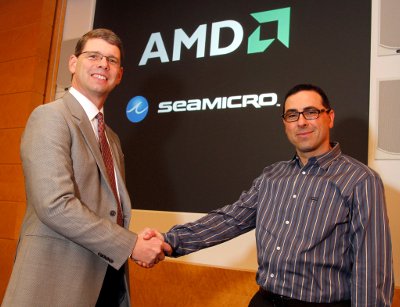AMD says its announcement of the US$334m agreement to buy the maker of micro servers SeaMicro does not signal that the processor company is going after the server systems market as some news reports on the deal have suggested.
John Fruehe, a product marketing director at AMD, said that while AMD will continue serving SeaMicro’s existing customers, the company was not ultimately interested in competing with OEMs.
“I wouldn’t say that we’re competing with them,” Fruehe said. “Ultimately, our goal is not to be in the systems business.”
Rather, AMD’s primary interest in the acquisition is SeaMicro’s supercompute fabric that connects many processor cores, memory, storage and IO. The company wants its OEM partners to roll out platforms based on this fabric, Fruehe said.
In addition to addressing the market for massive cloud-based infrastructures SeaMicro is addressing today, AMD is planning to develop the technology to address a wider range of applications, such as high-performance computing and standard computing.
“While we see this as being an important technology in the microserver space, we see there’s an opportunity to take the product a lot further ... into other markets,” Fruehe said.
“For us, the real focus is on the [intellectual property] and the technology, and what that brings us for future roadmaps and future products, so this is much more of a strategic play than ‘drive revenue tomorrow’ kind of a play.”
AMD has not revealed publicly – or to its OEM partners – what the product roadmap following the deal’s completion will be, Fruehe said. The shaping of that roadmap will begin after the acquisition closes sometime between four and six weeks from now, he explained.

